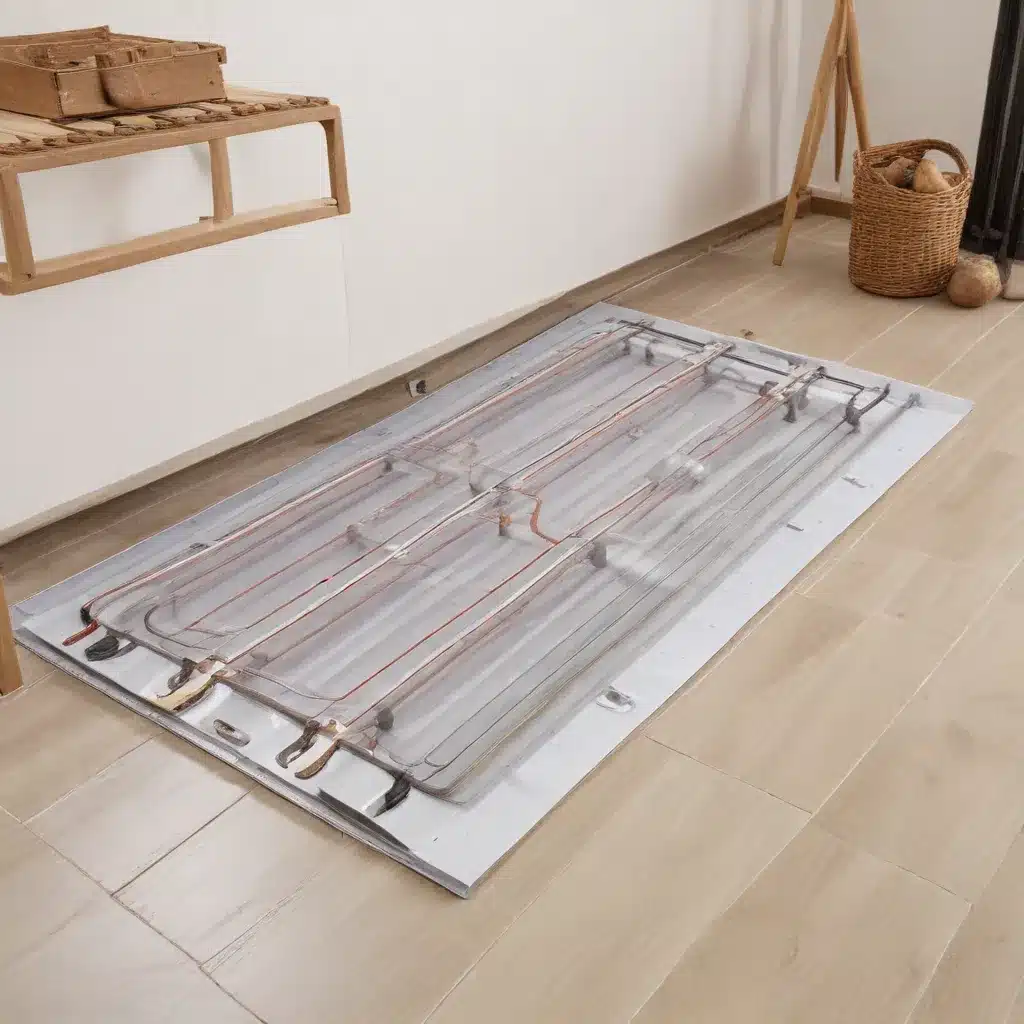
The Rise of Underfloor Heating: A Modern Heating Solution
In recent years, underfloor heating has emerged as one of the most recommended and sought-after heating systems among homeowners seeking evenly distributed warmth, compatibility with renewable energy sources, and reduced emissions. This innovative heating solution, rooted in ancient Roman engineering, has evolved to become a highly efficient and versatile option for modern homes.
Underfloor heating works by circulating warm water or electricity through a network of pipes or cables installed beneath the floor. The heat is then radiated upwards, creating a comfortable and consistent warmth throughout the living space. This method of heat distribution not only enhances comfort but also offers a range of advantages that make it an increasingly popular choice for homeowners.
How Underfloor Heating Works: The Principles of Radiant Heat
Underfloor heating systems, whether hydronic (using hot water) or electric, rely on the principles of radiant heat transfer to warm the living space. In a hydronic system, a boiler or heat pump heats water, which is then circulated through the network of pipes laid beneath the floor. The heat from the water is then radiated upwards, warming the floor and the objects and people in the room.
Electric underfloor heating systems, on the other hand, use heating elements or resistors embedded in the floor to convert electrical energy into heat, which is then radiated upwards. Both systems benefit from the use of insulation beneath the heating components to prevent heat loss and ensure efficient heat distribution.
One of the key advantages of underfloor heating is its ability to work in harmony with renewable energy sources, such as solar panels or heat pumps. When paired with these technologies, underfloor heating systems can help homeowners achieve a low-carbon footprint and significant energy savings.
The Advantages of Underfloor Heating: Comfort, Efficiency, and Versatility
Underfloor heating offers a range of benefits that make it an increasingly attractive option for homeowners:
Uniform Heat Distribution
Compared to traditional radiator-based systems, underfloor heating provides a more even and consistent distribution of heat throughout the living space. The heat radiates upwards, creating a comfortable and evenly-warmed environment, without the localized hot spots or cold drafts often associated with other heating methods.
Improved Energy Efficiency
Underfloor heating systems operate at lower temperatures than conventional radiators, typically around 35-40°C for heating and 15-16°C for cooling. This reduced temperature requirement translates into lower energy consumption and, consequently, lower utility bills for homeowners. Additionally, the ability to seamlessly integrate underfloor heating with renewable energy sources such as solar panels or heat pumps can further enhance energy efficiency and reduce the carbon footprint of the home.
Aesthetic Benefits
One of the significant advantages of underfloor heating is its unobtrusive nature. Unlike traditional radiators, which can limit furniture placement and disrupt the interior design, underfloor heating systems are hidden beneath the floor, allowing homeowners to design their living spaces without constraints.
Versatility in Installation
Underfloor heating systems are no longer limited to new-build construction or major renovations. Advances in technology have led to the development of low-profile and retrofit-friendly underfloor heating solutions that can be installed in existing homes with minimal disruption, making it a viable option for a wide range of properties.
Improved Comfort and Air Quality
Underfloor heating systems provide a comfortable, even warmth that is gentle on the body and does not create the same convection currents as forced-air heating systems. This can lead to improved indoor air quality by reducing the circulation of dust and allergens, particularly beneficial for those with respiratory sensitivities.
Compatibility with Renewable Energy
The low-temperature nature of underfloor heating systems makes them an excellent match for renewable energy sources, such as heat pumps and solar panels. This synergy can further enhance the energy efficiency and sustainability of a home’s heating system.
Choosing the Right Underfloor Heating System for Your Home
When it comes to selecting the right underfloor heating system for your home, there are a few key factors to consider:
Wet vs. Dry Installations
Wet underfloor heating systems, where the heating pipes are embedded in a concrete or screed floor, are commonly used in new-build construction or major renovations. Dry systems, where the heating elements are installed between layers of the floor, are more suitable for retrofitting in existing homes, as they require less floor height.
Hydronic vs. Electric Systems
Hydronic underfloor heating, which uses hot water circulating through pipes, is typically more energy-efficient and cost-effective in the long run, especially when paired with renewable energy sources. Electric underfloor heating, while offering a quicker installation, may be more expensive to operate, particularly in areas with high electricity prices.
Compatibility with Floor Coverings
The type of floor covering can impact the performance of an underfloor heating system. Ceramic tiles and certain types of laminate flooring are ideal, as they conduct heat efficiently. Carpets and thick wood floors, on the other hand, may reduce the system’s effectiveness and should be carefully considered.
When selecting an underfloor heating system, it’s essential to work with a reputable DD Plumbing and Heating professional who can assess your home’s specific needs and recommend the most suitable solution. They can guide you through the installation process, ensure proper insulation, and help you integrate the system with your home’s existing heating and cooling infrastructure.
Unlocking the Full Potential of Underfloor Heating
Underfloor heating has come a long way since its ancient Roman origins, evolving into a highly efficient and versatile heating solution for modern homes. By providing uniform warmth, improving energy efficiency, and seamlessly integrating with renewable energy sources, underfloor heating offers a range of benefits that make it an increasingly popular choice among homeowners.
Whether you’re building a new home or considering a heating system upgrade, exploring the advantages of underfloor heating can open up a world of possibilities for enhancing the comfort, energy savings, and environmental sustainability of your living space. Consult with the experts at DD Plumbing and Heating to discover how underfloor heating can transform the way you heat and cool your home.


